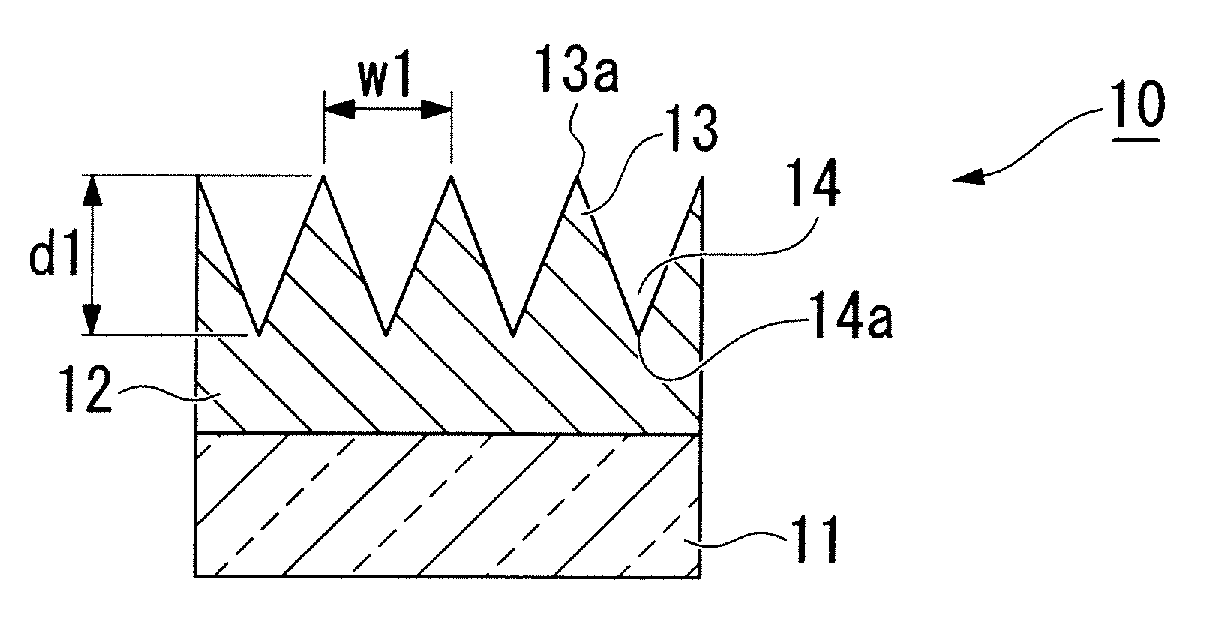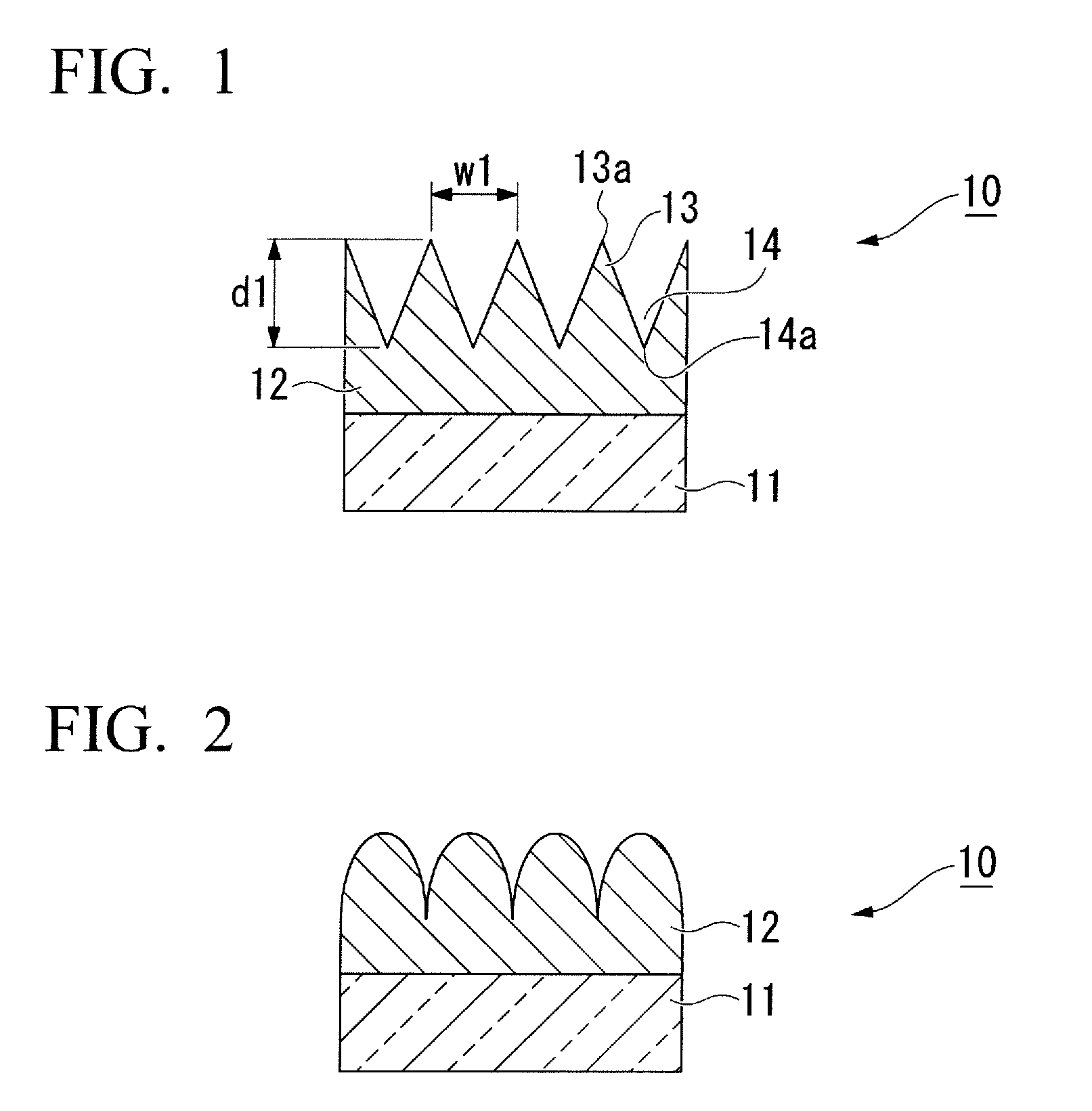Transparent molded body and antireflective member using the same
a technology of anti-reflective parts and molded bodies, which is applied in the direction of identification means, instruments, other domestic objects, etc., can solve the problems of optical performance which cannot be reproduced by other methods, limitation of the reduction of reflectivity and dependence of reflectivity on wavelength, and difficulty in achieving the effect of good anti-fouling properties
- Summary
- Abstract
- Description
- Claims
- Application Information
AI Technical Summary
Benefits of technology
Problems solved by technology
Method used
Image
Examples
example 1
Preparation of Transparent Molded Body
[0095]1.5 parts by weight of Irgacure 184 (manufactured by Ciba Specialty Chemicals Inc.) based on 100 parts by weight of the monomers was dissolved in 20 parts by weight of dipentaerythritol hexaacrylate (DPHA), 70 parts by weight of Aronix M-260 (manufactured by Toagosei Co., Ltd.; the number of the average repeating units of the polyethylene glycol chain: 13), and 10 parts by weight of hydroxyethyl acrylate, thereby obtaining an active energy ray-curable composition. A few drops of the active energy ray-curable composition were dropped on a stamper and coated by spreading on an acryl resin film, and then by the active energy ray-curable composition being photocured by irradiation with an ultraviolet ray at an energy level of 400 mJ / cm2 from the side of the film. The film and the stamper were released to obtain a transparent molded body having a fine uneven structure with a distance w1 between the adjacent convex portions of 200 nm and a heigh...
example 2
[0099]In the same manner as in Example 1, except that 30 parts by weight of dipentaerythritol hexaacrylate (DPHA) and 60 parts by weight of Aronix M-260 (manufactured by Toagosei Co., Ltd.) were used, a transparent molded body having a fine uneven structure with a distance w1 between the adjacent convex portions of 200 nm and a height of the convex portion d1 of 200 nm was prepared, and evaluations of the water contact angle, the antifouling property test, and the reflectivity were carried out. The results are shown in Table 1.
example 3
[0100]In the same manner as in Example 1, except that 40 parts by weight of dipentaerythritol hexaacrylate (DPHA) and 50 parts by weight of Aronix M-260 (manufactured by Toagosei Co., Ltd.) were used, a transparent molded body having a fine uneven structure with a distance w1 between the adjacent convex portions of 200 nm and a height of the convex portion d1 of 200 nm was prepared, and evaluations of the water contact angle, the antifouling property test, and the reflectivity were carried out. The results are shown in Table 1.
PUM
| Property | Measurement | Unit |
|---|---|---|
| water contact angle | aaaaa | aaaaa |
| distance w1 | aaaaa | aaaaa |
| wavelength | aaaaa | aaaaa |
Abstract
Description
Claims
Application Information
 Login to View More
Login to View More - R&D
- Intellectual Property
- Life Sciences
- Materials
- Tech Scout
- Unparalleled Data Quality
- Higher Quality Content
- 60% Fewer Hallucinations
Browse by: Latest US Patents, China's latest patents, Technical Efficacy Thesaurus, Application Domain, Technology Topic, Popular Technical Reports.
© 2025 PatSnap. All rights reserved.Legal|Privacy policy|Modern Slavery Act Transparency Statement|Sitemap|About US| Contact US: help@patsnap.com


